We know just how important digital marketing is in the 21st century. That’s why our clients trust us to improve their company's online presence in various ways. For instance, launching a website is an exciting milestone for any business.
Many don’t realize, though, that this is only the first step in any robust digital marketing strategy. After all, what good is a website if it can’t be easily found online? Search engine optimization (SEO) bridges this gap, ensuring that users can find a website on Google. But just how does SEO work and how long does it take? We decided to share some data from one of our most successful SEO campaigns to date.
2021 SEO Case Study
One local business owner saw the need to improve her company’s online presence. We gladly stepped up to design and publish her professional website in January 2021. After publishing, we began implementing various SEO best practices including keyword research, monthly blog posts, and Google Business Profile (GBP) updates.
In 2021, our client saw her website traffic explode. Plus, her website’s bounce rate decreased by nearly 10% from June to November. This means not only were more people visiting her website, but also that, on average, they were more likely to stick around for longer periods of time.
This website now appears on page 1 of Google results for certain relevant keywords. It also consistently receives more than 60 phone calls per month tracked via its GBP. Such growth involved consistent website updates, long-term content strategy, and the use of industry-specific keywords. Our approach to SEO entails a number of different steps, some of which are outlined here.
1. Nurture New Users
A brand-new website is a great starting point for any business. However, it often falls behind its competitors when it comes to organic traffic. This is mainly because few users, if any, are even aware of its existence from the start.
That’s why guaranteeing an enjoyable experience for every website’s very first users is absolutely essential. Given that most internet users prefer mobile browsing, we always optimize our clients’ new website builds for smartphone use. This process ensures that websites load quickly, are easy to navigate, and contain content similar to that of their desktop versions.
When mobile optimization is implemented alongside other SEO strategies, new websites like this one tend to see a rise in unique new user visits. However, the goal is to maintain this growth for many years to come. This is where keyword research, GBP updates, and website blog content truly shine.
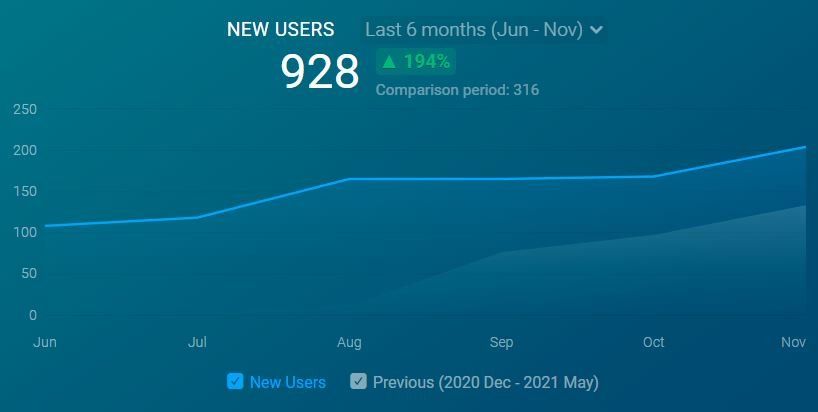
2. Appear in More Searches
The goal of SEO is to appear authentic to Google’s algorithms. That way, it will display your website over competitors when users search for certain terms. Given that most web traffic comes directly from organic searches, businesses must not overlook this fact.
Our ongoing SEO process involves consistent updates with high-quality, original content. From monthly blog posts to weekly Google Business Profile updates, we know what it takes to climb the ranks. We gladly take on our clients’ voices and represent them in the most genuine way possible.
All our SEO blog posts are well researched and filled with popular keywords. Plus, they’re written in a way that’s accessible to the average reader while still including multiple backlinks to authoritative sources.
SEO takes time, but it can have dramatic results. Our client saw a huge increase in the number of searches her company appeared in over 6 months.
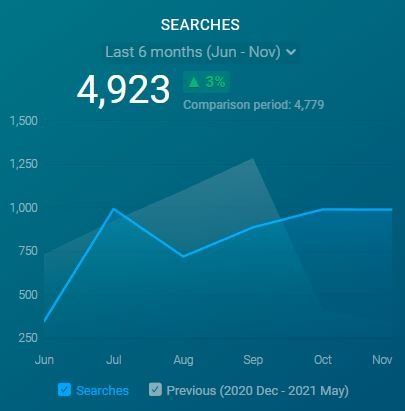
3. Reduce Bounce Rate
A large volume of website traffic is great, but how quickly users leave is just as important. This is known as bounce rate, which Google defines as a “single-page session.” A high bounce rate is usually a bad sign if your website has multiple pages and you wish them to call, book a meeting, or purchase a product.
Keeping users engaged is critical for making sales and building brand loyalty. If too many leave early in their session, then the website likely didn’t provide them with much value. After our client's website bounce rate increased in July, we made some changes to its overall layout. Those responsive adjustments made a major impact over just 6 months.
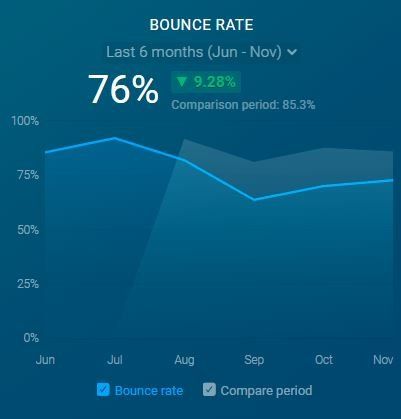
4. Maintain a Google Business Profile
Google continues to dominate the search engine market. In 2021, it received well over 90% of all global search traffic. Thankfully, Google provides marketers with useful tools like its Business Profile, which you’ve likely seen on many occasions.
This user-friendly interface displays a business’s website, address, phone number, and hours of operation beside search results. It also allows users to ask questions, leave reviews, and view photos of products, services, and team members. Plus, they can make a phone call and request directions with the tap of a finger.
Highly ranked GBPs provide companies with the ability to easily track valuable, revenue-generating actions for free. Thus, a GBP one primary component of any solid SEO strategy. It’s especially useful for capturing the attention of local consumers. Our client continues to receive dozens of tracked calls each month through her GBP.
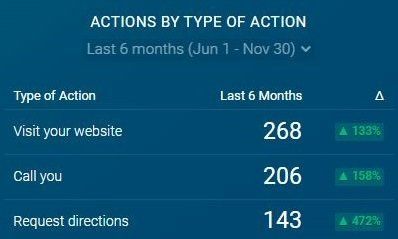
12 Months Later
Consistency is key when it comes to SEO. Google search rankings rarely change overnight, and they sometimes don’t even budge much month to month. However, if you zoom out, you just may be surprised with the results over time.
The truth is SEO takes a while to work its magic. With over 200 million websites active on the internet today, there’s simply too much competition and momentum to overcome quickly. That’s why we generally recommend at least 6 months of service for our clients.
The client featured in our case study was so thrilled with her website and its traffic that she decided to renew her partnership with us. Since this case study was originally published in December 2021, her company has continued to see positive results from our efforts.
Her bounce rate fell by about another 10% since this time last year, her company appears in thousands of searches each month, and nearly 80% of all her website traffic now comes from organic search. Plus, she still receives dozens of monthly phone calls and website visits from her GBP alone.
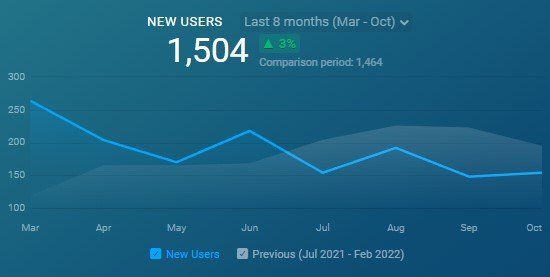
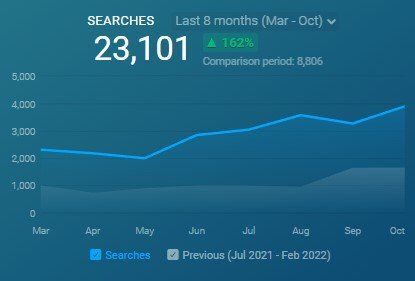
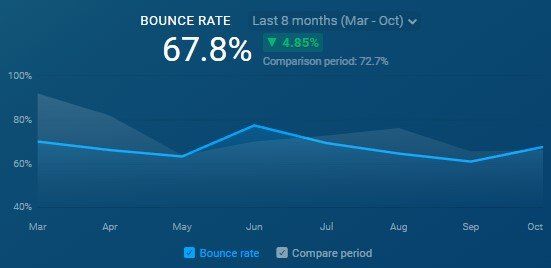

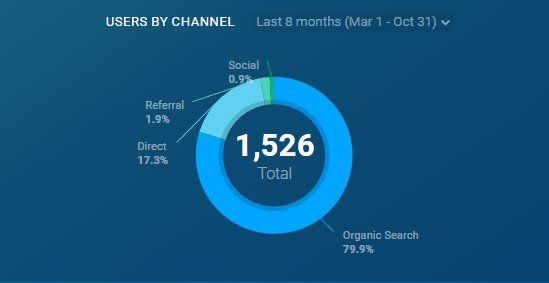
We’ve chosen to update this case study for various reasons. While results like these aren’t impossible, they’re among the best we’ve seen to date, especially with a brand-new website. That said, not every website in every industry can expect the same results from SEO alone.
There are countless factors to consider given today's business world, and we can’t guarantee these results for any of our SEO clients. However, you miss every shot you don’t take, to quote a famous hockey player, and there’s better time to get started than today. With a high-quality website, a solid SEO strategy, and perhaps some PPC, email, or social media marketing, almost any company can capture their fair share of website traffic.
Ask Us How SEO Works
Websites still form the backbone of the modern internet. Companies with an optimized digital presence gain a huge advantage over their competitors. SEO strategies work in tandem with websites to allow businesses large and small to stand out online. If your business needs a website or help with SEO, then we welcome you to contact us today. We look forward to being your guide in the digital age.
Originally published on December 17th, 2021
Latest Posts



